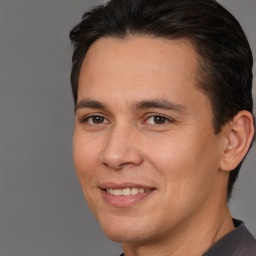Introduction
All field has obtained advancement for the reason to meet the requirements of time. Through its systematic methodology, the management has now become an art. An innovative management type which is prevailing and spreading in the business firms is human resource management. A company cannot build a good team of professionals at the workplace without having an effective human resource management. Here, the report is briefing about the key functions and role played by the HR manager in the recruitment, selection and proper management of manpower in the company. Several HRM practices and their implications at the workplace is also defined to measure its benefits for the Canary Wharf firm. The paper is also illustrating elements of employees' legislation together with its impact on HRM decision making and practices.
TASK 1
P1: The purpose and functions of HRM applicable for workforce planning and resourcing in the organisation
Human Resource Management (HRM) refers to the formal system of managing the people within an organisation. Many authors and scholars had tried to define human resource management in different words and ways, however, the core meaning deals with describing how to manage employees in the organisation. According to Decenzo and Robbins (1988), HRM concerns with the people dimension in business management. Another definition by Mathis & Jackson (2003), human resource management is a formal system which is designed to ensure optimum utilization of human talent in order to achieve organisational objectives. Thus, HRM can be defined as a systematic process of procuring, developing and maintaining available limited skilled workforce so that the human resource is effectively and efficiently utilised for achieving organisational goals (Auer and Cazes, 2003).
It's the employee who carry out several work activities in an organization. HR managers and professionals have the important responsibility of organizing people so that they can effectively perform these activities. Therefore, HRM has emerged as a major function in organisations that deals with issues related to employees such as hiring, performance management, compensation, training and development, safety, wellness, benefits, employee motivation, dispute resolution and communication (Wilthagen and Tros, 2004). In this way, HR professionals work as a consultant for managers in the organisation advising them how to strategically manage people as business resources and how to utilize them for achieving organisational goals (Benjamin, 2017).
The organisational purpose of the HRM is to recognise its contribution for organisational effectiveness. The functional objective is to maintain the contribution of HRM activities as per the organisation's needs. The primary responsibilities of the human resource management includes job analysis and staffing, organization and utilization of work force, measurement and appraisal of work force performance, implementation of reward systems for employees, professional development of workers, and maintenance of work contracts. Moreover, HRM provide the necessary tools, techniques, and methods which helps to create a favourable and positive business environment for innovation and employee development (Bernardin, 2002).
P2: Strengths and weaknesses of different approaches to recruitment and selection
Recruitment is one of the basic functions of organisation's human resource management and planning process. Recruiting refers to the process of attracting prospective employees from the available labour in the market. The organization must be able to attract a sufficient number of candidates who have the required abilities and competence which are required to carry out the particular job's responsibilities (Tekleab and Taylor, 2003). An effective employee selection procedure defines the effectiveness of recruiting process which helps the organization to achieve its objectives. The recruitment process is associated with other personnel management functions such as performance evaluation, compensation management, employee relations, training and development (Bianca, 2016). The recruitment process is a systematic approach which begins with the knowledge of vacancy in the organisation and finishes after the appointment has been made. The main stages of the recruitment process are - identify vacancy, prepare job description and person specification, advertising the vacancy, managing the response, short-listing the job applications, arrange for interviews, conducting interviews and decision making (Blyton and Turnbull, 2004).
Basically, there are two main sources of recruitment available to the organisation - internal recruitment and external recruitment. Internal recruitment sources are associated with filling up the vacancy from candidates within the organisation which include promotions, transfers, employee referrals, former employees, retrenched employees, compassionate appointments etc (Practical Approaches to Recruitment and Selection, 2017). External sources of recruitment refers to the hiring candidates from outside the organisation to fill job openings such as employment agencies, executive search firms, college recruitment, professional associations, labour unions, competitors and other firms, internet and media sources etc (Recruitment Methods: Approaches to Selection, 2017). There are various benefits and shortcomings associated with internal and external sources of recruitment which are listed below. It can be said that both are applicable and suitable for the company and the selection varies for different situations and job requirements (Bruce, 2013).
|
Recruitment Source |
Internal recruitment |
External recruitment |
|
Strengths |
|
|
|
Weaknesses |
|
|
TASK 2
P3: Benefits of different HRM practices for both employer and employees of the organisation
Different HRM practices are carried out by the Human Resource Department of the organisation to manage employees in order to effectively achieve the organizational objectives. Some of those practices include training and development, job design and performance management. Job design is the process of structuring work activities in logical manner so that job related data and related skill requirement can be analysed (Evans, Pucik and Barsoux, 2002). The performance management system helps in positive recognition of staff workers efforts by rewarding the same. It starts with defining workers' role for the completion of organization's objective by identifying the responsibilities and related setting of individual objectives. The process follows with regular monitoring of the progress against the pre-set objectives and continuous feedback is provided to the employee to ensure they are in path of achieving the organizational objectives. Learning is an ongoing process and training is an important aspect of the ongoing skill development (Martin, Whiting and Jackson, 2010). There are many benefits of these different HRM practices to both employer and employees as explained in the following table:
|
HRM Practices |
Benefits for employer |
Benefits for employees |
|
Job design |
|
|
|
Performance management |
|
|
|
Learning, development and training |
|
|
P4: The effectiveness of different HRM practices in terms of raising organisational profits and productivity
The successfulness of Canary Wharf firm in achieving goals would depend on the effectiveness of above stated HRM practices. The basic structure of the organisation's human resource management is determined by these HRM practices. It sets out the procedures to be followed by managers and employees of the organization in order to achieve business missions. The effective development and training programs would enhance the productivity of the employees (Mayhew, 2017). The improved productivity level will increase the output and enhance the profitability of the organization. The effective job design assist to clearly set responsibilities of workers. The employees will feel more comfortable with the job and found it easier to carry out assigned responsibilities with greater efficiency. Since, conflicts can be easily reduced which ensures efficiency and consistency in workers' performance. Again, the improved level of motivation will further enhance the productivity and resultant profitability of the organization (Mirror, 2002).
We tend to help you at every step regarding Academic Assistance
Get your Assignments Now!
The amount of training and development opportunities that employee receive is directly and positively related with the overall performance of the organisation. Canary Wharf intends to gain a sustainable competitive advantage through provide learning opportunities for their employees. If employees would receive continuous training, they will learn new things for improving the quality of the products and services of the company. In this way, trained and skilled workforce will enhance the productivity and profitability of the firm (Mondy and Martocchio, 2016).
Finally, an effectively implemented performance management system will further boost the accountability. Performance management is an important aspect for realizing organizational goals as it helps in integrating the organizational objectives with the KPI's in an organization both vertically and horizontally across all job categories and ensures to drive all the activities right from the bottom level towards one single objective (Stavrou and Brewster, 2005). It will also help to overcome the communication barrier as there will be greater clarity of expectations from the employees. The self-assessment opportunity will contribute to improve performance, employee retention and loyalty (Perritt, 2006).
TASK 3
P5: The importance of employee relations in respect to influencing HRM decision-making
Employee relations refer to HRM practices that deal with minimising and resolving issues concerning people at the work place. Maintaining strong employee relations is essential for organizational success as it is pre-requisite for employee satisfaction which results in high productivity (Shepherd and Mathews, 2000). Healthy employee relations depends upon a number of factors such as employees commitment and involvement level, healthy and safe work environment, employee motivation and its rewards, and effective communication system in the organization. Better employee relations helps the organisation to enjoy services of more efficient, motivated and productive employees (Rainbird, Fuller and Munro, 2004).
Good employee relation implies that the organisation has employees which feel positive about their job, and feel excited to work for the organization. However, there may be circumstances where organization's management of employee relations do not succeed as intended. Employee relations are negatively affected by indiscipline when the employees do not behave as per accepted norms of behaviour (Rubinstein and Kochan, 2001). There are various forms of indiscipline such as change in behaviour, absenteeism, frequent complaints, and slow performance. Indiscipline employees fail to meet management expectations in terms of standard performance and behaviour. In such cases, management is required to take necessary steps to ensure discipline at workplace so that employee relations can be improved (Allen, 2001).
There are various other concerns which also affect employee relations at workplace such as their expectations from the management to provide them with safe and healthy working environment, fair treatment, proper incentives, and participation opportunities in decision making. All these factors which influence employee relations must be carefully tackled. An optimistic approach to strengthen disciplinary culture rooted on shared norms of employees should be adopted (Boning, Ichniowski and Shaw 2007). Following are the suggestions to improve employee relations:
- HRM should ensure that managers treat employees in just and fair manner while avoiding employee favouritism.
- Competitive pay should be offered to employees and salaries should be fairly paid according to individual's skills and competencies.
- Employees should be assigned greater responsibilities and training opportunities for keep their interest live and makes the job more challenging.
- Employees should be encouraged to provide feedback so that management are aware of their concerns and views about company's decisions (CoyleÂShapiro and Kessler, 2000).
- Management should ensure to have friendly working atmosphere so that employee feel comfortable with the management.
- Employees' good work and efforts should be recognised, appreciated and rewarded to boost their morale and increase commitment (Sels and et.al., 2006).
- Continuous communication with employees is essential to keep them updated about company's policies, procedures and decisions. Well-informed employees are pre-requisite to make effective decisions as they will be more motivated and productive (Coz, 2000).
P6: The key elements of employment legislation and its impact on HRM decision-making
The HRM decision making at Canary Wharf firm is significantly affected by employment legislations of the UK government. There are several employment laws and regulations that govern and regulate the relationship between employer and employee (Datta, Guthrie and Wright, 2005). The key elements of these legislations that impacts the HRM decision-making are -
- The Employment Rights Act, 1999 and 2003 - It provides contractual rights to employees with respect to itemised pay statement, national minimum wages, terms and conditions of work and protection against unfair dismissal at work (Gould-Williams, 2003).
- The Equal Pay Act, 1970 - ensures equal treatment of women and men with respect to pay for doing the same type of work at similar rank.
- The Working Time Directive, 1999 - makes sure a maximum of 48 hours working week, and a four week holiday (Jacobsson, 2004).
- Disability Discrimination Act, 1994 - ensures non-discrimination due to disability so that disable person should not be treated less favourably.
- The National Minimum Wage Act, 1998 - laws related to minimum wage which is increased each year with respect to increased cost of living (Paauwe, 2009).
- Sex Discrimination Act, 1975 - Protection of employees against gender discrimination in cases of selection of employees or promotion of employees (Laursen, 2002).
Above mentioned employment legislations affects many aspects of HRM decisions such as salary, paydays, working hours, overtime, leave management, dispute resolution, sexual harassment, employee termination, payment deductions, and record keeping. HRM decisions under these factors should be made in accordance with the appropriate laws. The particular organisation has a labour-intensive small businesses which also involves connection to employer organisations and trade union (Lengnick-Hall and et.al., 2009). Therefore, HRM decision making are impacted by several issues with inadequate working hours, and health and safety at work. Minimum wage ensures fair payment of the hourly or monthly wage of employees. Overtime refers to extra work hour that employees put beyond the 48 hours week for which employees should be paid extra to compensate. There are other laws related to minors and alien or migrant workers for which necessary legal restrictions should be followed by the firm (O'Fallon and Butterfield, 2005).
TASK 4
P7: The application of HRM practices in a work-related context
Job description for a Nurse Position
Nurses play an important part in a team of professional and medical staff that includes doctors, specialists, social workers and therapists. Nurses are the main point of contact for patients and families of the patient. They work with other team members to provide the patient comfort and are responsible for the patients' emotional care and medical needs. The primary role of Nurses is to provide nursing care for patients who are taking medical facilities in the hospital. Gaining the trust and confidence of each patient is an important aspect of the job for nurses and their main aim is to improve the patients' quality of life. Typical duties for the job of Nurse includes following:
- Assess and plan the requirements of nursing care
- Observe and record patients' medical condition
- Write and keep records of the patient's medical progress
- Provide emotional support to patients and their relatives
- Monitor and administer medication and prescribed drugs
- Take samples, pulses, temperatures and blood pressures of patients
- Assist with medical tests and evaluation
- Deliver pre- and post-operation care
- Organise workloads and supervise junior staff in carrying out their responsibilities
- Mentor nursing student and guide them for training
- Plan discharge of the patients from the hospital
Person specification document for a Nurse Position
To work as a nurse in the UK, the candidate must be registered with the Nursing & Midwifery Council. He/she need to have completed an accepted pre-registration nursing programme in order to be eligible to register and these are only run at NMC approved educational institutions. A degree in relevant subjects including biomedical science, human biology, life and medical sciences, physiology, psychology or social work is essential. Other requirements are described below:
Skills: Followings are the list of essential skills for a typical Nurse position:
- Ability to communicate with and gain the trust of diverse background of people;
- Sensitivity, empathy, and emotional flexibility to be able to help people under difficult situations;
- Flexibility to deal with a variety of patients at any time;
- Team working, organisational and social care management skills.
Work Experience: Pre-entry experience is not essential, however, relevant work experience as a care worker or in similar work is preferred.
Interview questions for a Nurse position
Interviewers ask different types of questions to determine the personality of employee and to judge whether the candidate will be a good fit for the nursing position in the firm.
- What made you choose nursing as a career?
- Why do you want to join this particular organisation?
- What challenges you find being a nurse?
- How would you handle a patient who is severely suffering from pain?
- How would you handle a family who is displeased with the patient care?
Conclusion
The above report concludes that a tremendous role is played by the human resource management in a company. The HR manager deals with several aspects both in favour of organisation and employees. The HR manager perform a link in between employees and top management to ensure fulfilment of staff personal needs and achievement of business objectives. Also, the HRM holds an important position in the firms' structure. The responsibility of right candidate selection for the right time and right post is completely lies on the HR manager. In this regards, he/she is also liable to check the performance benchmark of the candidates and arrange interview panel for their selection. Thus, the HR manager contributes valuable efforts in the long-run of business and prove more creative and needed field in the overall effective management of the organisation than any other.
References
- Auer, P. and Cazes, S., 2003. Employment stability in an age of flexibility: Evidence from industrialized countries. International Labour Organization.
- Bernardin, H.J., 2002. Human resource management: An experiential approach. Irwin Professional Pub.
- Blyton, P. and Turnbull, P., 2004. The dynamics of employee relations. Palgrave Macmillan.
- Evans, P., Pucik, V. and Barsoux, J.L., 2002. The global challenge: Frameworks for international human resource management. New York, NY: McGraw-Hill/Irwin.
- Mirror, T. ed., 2002. Compensation (Vol. 8). New York: McGraw-Hill.
- Mondy, R. and Martocchio, J.J., 2016. Human resource management. Human Resource Management, Global Edition.






















